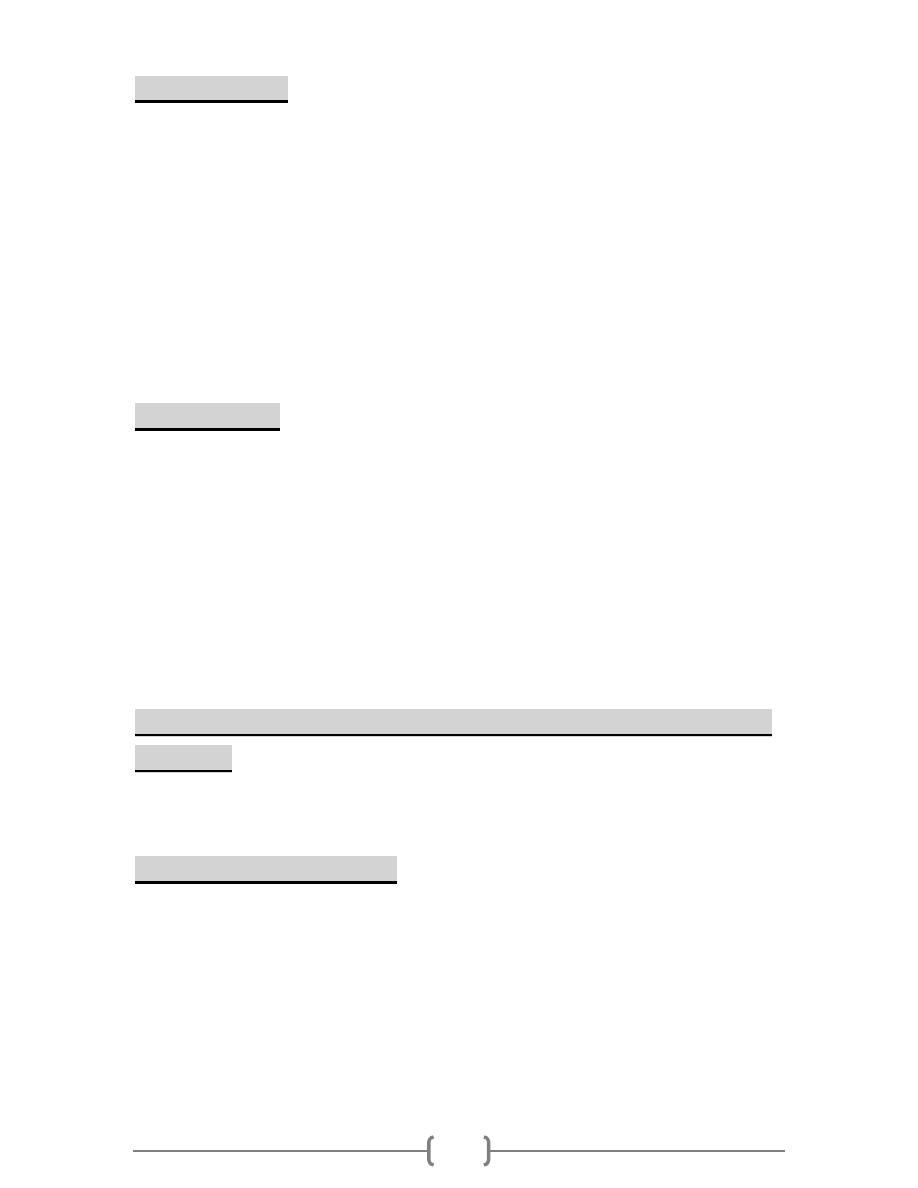
0
Gynecological History
Alkindy College of medicine
Fifth stage
2015 – 2016
Mostafa Hatim

1
Notes to know:
History taking must be symptomatic to avoid omissions & it should be conducted
with sensitivity to each individual situation & without haste.
Make sure that your appearance is suitable before you enter the room where your
patients there.
Always introduce yourself when meeting your patient for the first time & tell her why
you have come to see here.
Some women will wish another person to be present if the student is male, even just
to take a history & this should be respected.
On case presentation it is enough to summarize negatives, such as (there is no
important past medical, surgical or family history), but also should mention Negatives
that are relevant to your history.
Personal Data
Patient: name, age, religion, occupation, residency, blood group, Rh, Date of admission
if admitted, date of history taking.
Husband: name, age, occupation, blood group, Rh.
Degree of consanguinity
Gravity (G): total number of pregnancy, regardless of how did they end.
Parity (P): number of live births or still births after 24
th
weeks. For twin pregnancy, they
count as 2.
Abortion (A): Loss of pregnancy before 24
th
week gestation.
Last menstrual period (LMP)
Chief complaint (brought patient to seek medical advice) & its
duration:
“So what’s brought you in today?” or “Tell me about your symptoms”
Allow the patient time to answer, trying not to interrupt or direct the conversation.
History of present illness:
Onset – when did the symptom start? / was the onset acute or gradual?
Duration – minutes / hours / days / weeks / months / years
Severity – e.g. if symptom is vaginal bleeding – how many sanitary pads are they using?
Course – is the symptom worsening, improving, or continuing to fluctuate?
Cyclical – do symptoms have any relationship to the menstrual cycle?
Intermittent or continuous? – is the symptom always present or does it come and go?
Precipitating factors – are there any obvious triggers for the symptom?
Relieving factors – does anything appear to improve the symptoms e.g. an inhaler

2
Associated features – are there other symptoms that appear associated e.g. fever / malaise
Previous episodes – has the patient experienced this symptoms previously?
Key gynaecological symptoms:
o
Abnormal vaginal discharge – suggestive of infection
o
Vaginal bleeding – menorrhagia / intermenstrual/ post-coital / post-menopausal
o
Vulval itching / discomfort / skin changes
o
Abdominal / pelvic pain – dysmenorrhea / dyspareunia
Pain – if pain is a symptom, clarify the details of the pain using
SOCRATES
o
Site – where is the pain
o
Onset – when did it start? / sudden vs gradual?
o
Character – sharp / dull ache
o
Radiation – does the pain move anywhere else?
o
Associations – other symptoms associated with the pain
o
Time course – worsening / improving / fluctuating / time of day dependent
o
Exacerbating / Relieving factors – anything make the pain worse or better?
o
Severity – on a scale of 0-10, how severe is the pain?
Current contraception – COCP / POP / Depot / Implant / Implanted uterine device
Any coital troubles [Discomfort, pain (deep or superficial), bleeding]
Cervical and vaginal cytology
o Most recent Pap smear result
o History of abnormal Pap smears? If so, nature of diagnosis, treatment, and follow-up
Infection
o History of sexually transmitted infections
o History of vaginitis, including types, frequency, and treatment
o History of pelvic inflammatory disease
Fertility/infertility
o Desire for future fertility
o Any difficulty conceiving in past? If so, prior evaluation and treatments
Sexual history
o Type, frequency
o Concerns about libido, dyspareunia, or orgasm?
o History of sexual abuse or sexual assault?
Ideas, Concerns & Expectations
Ideas – what are the patient’s thoughts regarding their symptoms?
Concerns – explore any worries the patient may have regarding their symptoms
Expectations
– gain an understanding of what the patient is hoping to achieve from the
consultation
Summarising
Summarise what the patient has told you about their presenting complaint.

3
This allows you to check your understanding regarding everything the patient has told you.
It also allows the patient to correct any inaccurate information & expand further on
certain aspects.
Once you have summarised, ask the patient if there’s anything else that
you’ve overlooked.
Continue to periodically summarise as you move through the rest of the history.
Menstrual history:
Age of menarche – the earlier, the greater exposure to oestrogen – ↑ risk of breast cancer
Last menstrual period (LMP) – defined as the first day of the LMP
Duration and regularity [ 5 (+/- 2) days every 28 (+/- 7) days ] – e.g. 5 day period
occurring regularly every 28 days
Flow & amount – heavy / light – number of sanitary towels / tampons can be useful to
estimate loss
Normal menses: Frequency (21-35) days, Duration (3-7) days, Volume (30-80) ml.
Menstrual pain – use the SOCRATES method shown above to assess menstrual pain & if
relieved by drugs
Menopausal symptoms – hot flushes / vaginal dryness / infrequent periods
Hormonal contraceptives – COCP / POP / depot / implant
If postmenopausal – what age did they go through the menopause?
Irregular bleeding
o Post-coital bleeding – cervical ctropion / STDs/ vaginitis
o Intermenstrual bleeding:
Consider malignancy in older females – e.g
Younger females may have unexplained irregular periods
Poor compliance with oral contraceptives can result in intermenstrual bleeding
Clinical types of Abnormal uterine bleeding:
Polymenorrhea, hypomenorrhea, oligomenorrhea, menorrhagia, metrorrhagea
(intermenstrual bleeding), menometrorrhagea
Systemic enquiry
Systemic enquiry involves performing a brief screen for symptoms in other body systems.
This may pick up on symptoms the patient failed to mention in the presenting complaint.
Some of these symptoms may be relevant to the diagnosis (e.g. reduced urine output in
dehydration).
Choosing which symptoms to ask about depends on the presenting complaint and your
level of experience.
Cardiovascular – Chest pain / Palpitations / Dyspnoea / Syncope / Orthopnoea /
Peripheral oedema
Respiratory – Dyspnoea / Cough / Sputum / Wheeze / Haemoptysis / Chest pain

4
GI – Appetite / Nausea / Vomiting / Indigestion / Dysphagia / Weight loss / Abdominal
pain / Bowel habit
Urinary – Volume of urine passed / Frequency / Dysuria / Urgency / Incontinence
CNS – Vision / Headache / Motor or sensory disturbance/ Loss of consciousness /
Confusion
Musculoskeletal – Bone and joint pain / Muscular pain
Dermatology – Rashes / Skin breaks / Ulcers
Key symptoms
o
Fever – pelvic inflammatory disease – e.g. chlamydia
o
Tiredness / fatigue – anaemia – often occurs alongside
o
Weight loss – may suggest malignancy
o
Abdominal distension – uterine / ovarian malignancy
Past history:
Past obstetrical history:
Her age when she get married
Her age of getting her 1
st
baby
Any period of infertility (primary or secondary)
For each gravida: (pregnancy, delivery, outcome, puerperium)
1- Pregnancy:
Time of that pregnancy
Maternal complications: (UTI, vaginal bleeding, DM, preterm labour & any
febrile illness)
ANC
Duration of gestation (recorded in weeks)
2- Delivery:
Date
Type: NVD or C/S (indication)
Site: at home or at hospital
3- labour:
Onset: spontaneous or induced
Duration: in hours
4- Outcome:
Sex, weight, congenital anomalies
Crying time, did the baby need any resuscitation?
Breast or bottle feeding
His or her status now
5- Puerperium: Complications:
DVT, PPH (primary or secondary), history of breast feeding, puerperial psychosis

5
Past medical history
Gynecological conditions:
1- Past menstrual history
2- Any gynecological problem (Infection, PID & ask about its symptoms)
3- Any hospitalization & any operation done (Type, time, indications & complications)
4- Any coital troubles
5- Any contraception
Other medical conditions (Time, duration & treatment):
Hypertension, DM, Renal disease, venous thromboembolism, SLE, epilepsy, anemia,
thyroid disease ….etc.
Surgical history (Type, Time, indication, complications)
Previous trauma (Fractured pelvis may result in diminished pelvic capacity)
Drug history
(name, dose, duration of intake)
:
Gynaecological medications:
o
COCP / POP / Implant / Depot
o
Transexamic acid
o
Hormone replacement therapy
o
Antifungals
Other regular medication, Antibiotics, Any allergies to drugs
Family history:
Hereditary diseases / Uterine / Ovarian / Genital tract cancers / Breast cancer
Social history:
(Local knowledge of different areas in the country is very helpful here)
Smoking – How many cigarettes a day? How long have they smoked for?
Alcohol – How many units a week? – be specific about type / volume / strength of alcohol
Diet, exercise & Recreational drug use
Living situation:
o
House / Flat – stairs / adaptations
o
Who lives with the patient? – important when considering discharging home from hospital
o
Any carer input? – what level of care do they receive?
Activities of daily living:
o
Type of work, any strenuous activities
o
Is the patient independent / able to fully care for themselves?
o
Can they manage self hygiene / housework / food shopping?
o
Is the illness interfering with these daily activities?
o
Exposure to domestic animals
Occupation
